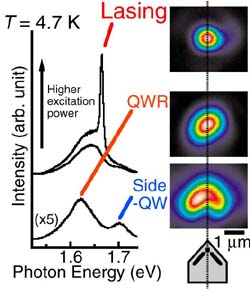We can make very smooth one dimensional structures, since the ridge-wire is formed by natural migrations of atoms on facet surfaces. In addition, confinement energies of electrons and holes are much larger than T-wire structures.
Optical characterization of the ridge-wire laser was my thesis subject in ISSP, Univ. of Tokyo.
Power Point Presentation for my thesis (English). [10.0 MB]





